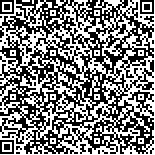下载中心
优秀审稿专家
优秀论文
相关链接
摘要

传统的机载合成孔径雷达(SAR)一般依赖于GPS/INS组合系统补偿平台的运动误差,并获得高分辨率的图像。GPS获取的地理坐标(即经度,纬度和高度)需要转换为本地的直角坐标,原始雷达数据在这个直角坐标系下才能引入成像及运动补偿算法进行处理,并获得本地直角坐标系下的图像。这种图像是通过局部坐标描述的,对于其他部门是不通用的,因为其他部门需要的是经过全球地理坐标标绘的图像。本文提出了一种由后向投影算法BP(Back Projection)引出的新的SAR成像算法,它直接在地理坐标下处理,可避免坐标转换的过程。而且生成德图像像素均和地理坐标一一对应,能够很方便地被情报或其他部门使用。而且在仿真试验以及外场试验中,证明了本文算法和常规BP算法成像效果是相当的。
Traditional airborne SAR (Synthetic Aperture Radar) makes use of the GPS/INS to compensate the platform motion error to acquire high resolution images. GPS data with geographical coordinates (consists of longitude, latitude and height) is converted to a local Cartesian coordinates, under which raw radar data is processed with some imaging and motion compensation algorithms to create an image with the local coordinates. However, it is not easy to be understood for other departments who need an image located by geographical coordinates. This paper presents a novel SAR imaging algorithm derived from Back-Projection that can be processed directly under the geographical coordinates and avoid coordinates transformation. Each pixel of the image obtained via this algorithm is located with geographical coordinates, which is convenient to be applied by the intelligence or other survey departments. Images obtained under geographical coordinates by this algorithm are as clear as traditional algorithms that been proved by simulations and an outside experiment.

